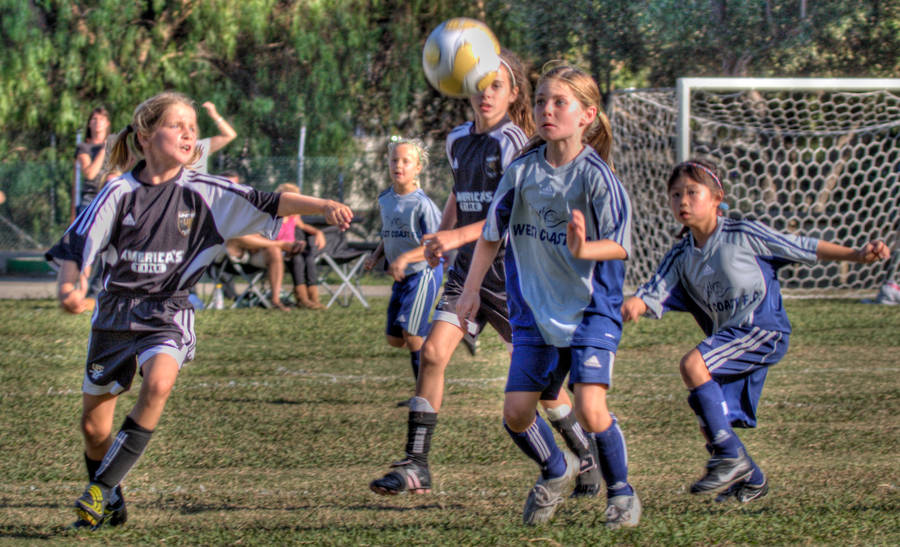Every inch and every millisecond counts in modern soccer. Glory or defeat comes down to two factors: speed and strength. The question is, which is more important? Power closes space, speed opens it. And in the chaos of a 90-minute game, the answer depends on where and when you're watching.
How Physical Strength Impacts Today’s Game
Physical strength in football isn’t just about bulk but control in tight spaces. It gives players a real edge during contact, especially in set-piece battles or hold-up play. Moments like these often decide games, and if you follow match dynamics on an online betting site, you’ll see how quickly odds shift after a single physical duel. Rodri uses his frame to shield and reset under pressure. Giroud, meanwhile, locks onto defenders like a wrestler—once he pins you, you’re not going anywhere.
Modern athletes are built for that kind of intensity. Functional power and explosive contact are trained daily. It’s not just timing—it’s calculated force. And the numbers back it up: players with higher lean muscle mass and strong core stability consistently win duels. When the moment demands it, strength dominates.
Why Speed Creates More Opportunities
If power dictates the moment, then speed is an absolute disruptor. It's now the norm that fast players don't just run- they disrupt structure. This is why most coaches build systems around acceleration and chaos.
That's where speed comes in:
-
In Counterattacks, over 40% of Champions League goals were scored within eight seconds of a turnover in 2023.
-
Overlap Runs- Full-backs like Hakimi create overloads by reaching top speed within three seconds.
-
In Vertical Pressing, Klopp's system relies on explosive sprints to force costly defensive mistakes high up the pitch.
-
Players like Vinícius Jr. can turn a defender into a mismatch with their speed in isolation plays.
With speed, everything changes, and space becomes dangerous. Speed opens up passing lanes, distracts defenders, pulls them out of position, and forces them to make mistakes without touching the ball.
The Balance Between Strength and Speed in Key Moments
Strength holds the boundaries. Speed breaks them. But in the crucial moments of a game — split seconds in the box or heart-pounding counters — the merging of the two is often what counts. We'll examine how these two forces collide in key moments.
Attacking with Speed Under Pressure
When time and space converge, speed becomes a means of escape. Watch Kylian Mbappe on the counterattack; he doesn't just outrun defenders, he distorts their timing. His acceleration lulls opponents into a dramatic pause. In those moments, defenders don't tackle. They freeze. Under pressure, speed creates disorder, which increases an attacker's chances.
But at high speed, it's composure. Players like Mohamed Salah know when to burst and slow down enough to finish smoothly. The best strikers use speed to control the situation, not to run away. They watch the defender's hips, not his feet. You approach space instead of players. With intent, speed under pressure is what determines results.
Defensive Recovery and Physical Duels
The recovery phase of modern soccer is merciless. One foul line, one slip, and a centre back chases a 20-year-old with a jetpack. Where acceleration meets resistance. Catching up is one thing, arriving is another. Rúben Dias isn't the fastest, but he gets there with power and timing.
Strength gains in physical duels always come in the fight's second half. There's the dash, and then there's the scramble. In this case, occupying space, protecting the ball, and muscling a trigger-happy attacker while remaining arrestable-hybrid defenders prevail. The best modern backs, like Éder Militão, are born sprinters with brute strength. It's one or the other. Late? Out-muscled? Cancelled.
What Fitness Data Tells Us About Player Development
Modern player development is data-driven. Activity data, such as sprints and power numbers, is no longer an afterthought; it is designed for daily sessions. Tracking how many bursts a winger makes before fatigue or measuring the force behind a defender’s push is now a race to the edge. Training is created to be customized.
By 2024, the player is expected to be a hybrid. Midfielders who run 33 km/h and bench 1.5 times their weight are the new norm. Youth academies have evolved to combine speed training with strength training. There is a synergy of power and endurance, defined as “repetitive power capacity. Power and speed are now measured together on one graph. Stay explosive, stay effective.
Tactical Systems That Favour One Attribute Over the Other
Different styles sometimes place different values on speed and power. For example, Guardiola prefers a game emphasizing positioning for his build-up play, while Someone revels in organized chaos. Coaches create plans based on the strengths of their players, sometimes hiding their weaknesses. Every player has their style, and that's intentional because it sparks debate.



















